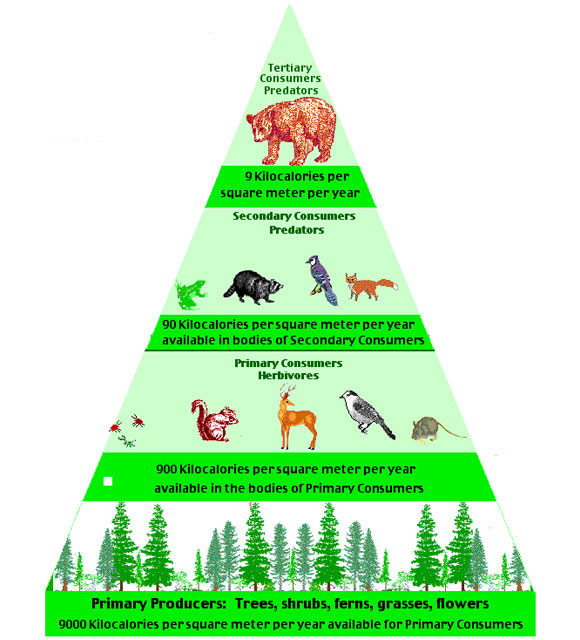
Pyramid of biomass
An ecological pyramid of biomass shows the relationship between biomass and trophic level by quantifying the amount of biomass present at each trophic level of an ecological community at a particular moment in time. It is a graphical representation of biomass(total amount of living or organic matter in an ecosystem) present in unit area in different tropic levels. Typical units for a biomass pyramid could be grams per meter2, or calories per meter2.The pyramid of biomass may be 'inverted'. For example, in a pond ecosystem, the standing crop of phytoplankton, the major producers, at any given point will be lower than the mass of the heterotrophs, such as fish and insects. This is explained as the phytoplankton reproduce very quickly, but have much shorter individual lives.
One problem with biomass pyramids is that they can make a trophic level look like it contains more energy than it actually does. For example, all birds havebeaks and skeletons, which despite taking up mass are not eaten by the next trophic level. In a pyramid of biomass the skeletons and beaks would still be quantified even though they do not contribute to the overall flow of energy.
Walang komento:
Mag-post ng isang Komento